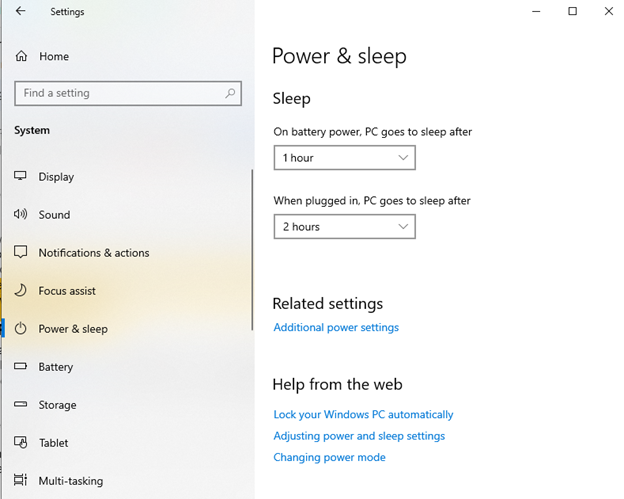
Sustainability in IT is about more than just being eco-friendly. It’s about creating systems and processes that are both environmentally responsible and operationally viable for the long haul. In this article, we’ll explore actionable strategies for striking the perfect balance between going green and staying competitive.
1. Green IT Strategies
Energy-Efficient Hardware
Choosing energy-efficient hardware is one of the easiest and most impactful ways to reduce your carbon footprint. Devices that meet standards (like Energy Star) consume less electricity, helping you lower energy bills while minimising environmental impact. Over time, these small savings add up, not just in cost reduction but in sustainability as well.
Actionable Steps:
- Look for the Energy Star certification or similar eco-labels when purchasing new hardware.
- Perform regular energy audits to identify outdated, inefficient devices that need replacement.
- Implement power management settings, like sleep mode, to automatically reduce energy use when devices are idle. You can find this by going to Settings-> System-> Power and Battery

E-Waste Reduction
Electronic waste (e-waste) is one of the fastest-growing environmental problems., with approximately 1.6 million tonnes – or £14 billion worth – of valuable metals discarded in the UK alone. Irresponsibly disposing of outdated or damaged hardware contributes to landfills and pollution. To combat this, implementing an e-waste management strategy is crucial.
Actionable Steps:
- Partner with certified e-waste recycling companies that follow proper disposal procedures.
- Extend the life of your hardware by upgrading components instead of replacing entire systems.
- Implement a clear hardware lifecycle management policy that outlines when to upgrade, recycle, or responsibly dispose of devices.
2. Operational Sustainability
Scalability with Cloud Solutions
Instead of constantly upgrading your physical hardware to accommodate growth, cloud solutions offer a flexible and scalable infrastructure that grows with your business.
However, while cloud platforms improve your efficiency, their own carbon footprint is substantial, so choose one that is taking the requisite steps to neutralise its own impact. Microsoft Azure aims to be carbon negative by 2030, for example, and AWS is targeting 100% renewable energy by 2025.
Actionable Steps:
- Assess your business needs and scale cloud services accordingly, avoiding the waste of resources you don’t need.
- Regularly review cloud usage reports to identify areas where you can reduce consumption and cost.
- Choose cloud platforms that offer sustainability features, such as renewable energy usage or carbon-neutral data centres.
Automation
By automating repetitive tasks, businesses can reduce employees’ manual workloads, optimise resource usage, and minimise errors. This leads to more efficient processes and helps conserve energy and resources.
Actionable Steps:
- Identify key areas in your IT operations where automation can improve efficiency, such as server maintenance or software updates.
- Implement automation tools that allow tasks to run during non-peak hours to save energy.
- Continuously monitor automated processes to ensure they are running efficiently and adjust them to reduce resource waste.
3. Industry Standards and Certifications
Sustainability certifications act as benchmarks that demonstrate your commitment to eco-friendly practices. When your IT infrastructure complies with these certifications, it shows that your business prioritises environmental responsibility.
Energy Star
Energy Star is one of the most widely recognised certifications for energy-efficient products. By choosing devices with this certification, you’re not only cutting energy costs but also contributing to global sustainability efforts.
Actionable Steps:
- When upgrading your hardware, ensure that any new devices carry the Energy Star label.
- Conduct a review of your current IT equipment, identifying which products are outdated and energy-inefficient. Replace them with Energy Star-certified alternatives.
EPEAT
The Electronic Product Environmental Assessment Tool (EPEAT) evaluates electronic products’ environmental impact. This certification helps you make informed decisions when purchasing IT equipment, ensuring your choices are sustainable from production through disposal.
Actionable Steps:
- Review the EPEAT registry when purchasing new electronic equipment to ensure the devices meet your sustainability goals.
- Implement an internal purchasing policy that prioritises EPEAT-certified products.
Conclusion
The benefits of sustainability go beyond doing your bit for the environment. It’s about creating an IT infrastructure that is scalable, cost-effective, and future-proof. As regulations tighten and energy costs rise, businesses that prioritise sustainability will be better positioned for long-term success.
At Operum, we’re here to help you navigate the path toward sustainable IT. Whether you need guidance in cloud license optimisation or advice about your hardware procurement, our team of experts is ready to assist you in building a green and efficient IT ecosystem.
Get in touch today.
Sign up below to join the Operum newsletter



